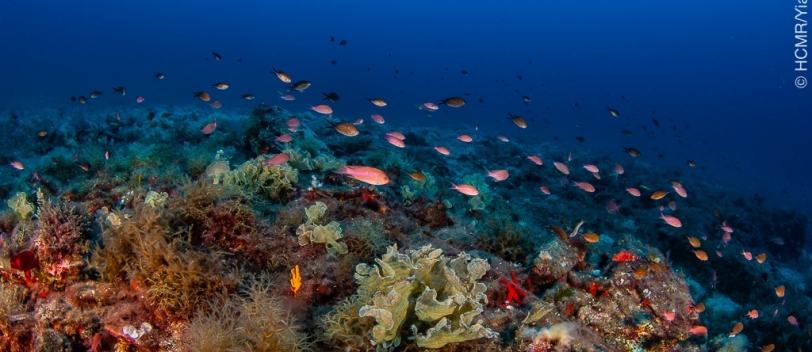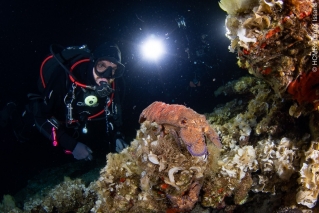Fish make a comeback in the MPA of Gyaros MPA
Significant biodiversity increase in the Greek Marine Protected Area

Gyaros is an arid, deserted island in the central Aegean Sea that has been enjoying the status of Marine Protected Area (MPA) since 2019. Thanks to the implementation of important conservation and management measures, including a spatio-temporal regulation of small-scale fishery, marine species diversity and abundance have increased significantly, proving the effectiveness of MPAs in rebuilding fish stocks and biodiversity.
The MPA was created through a wide consultative process that included numerous key stakeholders, like the local fishing community. And to better assess the effectiveness of the MPA, the Hellenic Institute for Marine Research (HCMR) has been carrying out a baseline knowledge survey since 2018, including experimental fishing, surveys of fish and eggs, and larvae using different methods, as well as public outreach with involved stakeholders. The effective management of the fishing activity was also analyzed looking at changes over time of several indicators such as species diversity index, biomass index, and the abundance of key predators.
Data collected showed that just after a couple of years following the implementation of management measures, fish catch abundance and species diversity inside of the MPA were 140% higher than outside the MPA where intense fishing occurs. Furthermore, 2/3 of species investigated inside the MPA resulted to have a larger size. Predatory species success was also evident: the underwater visual census surveys reported a notable increase in top predatory fish biomass within the 2-year study period, including a surprising abundance of the slipper lobster (Scyllarides latus) and mating aggregations of hundreds of golden groupers (Epinephelus costae).
These remarkable successes are the result of a proper and inclusive MPA design as well as effective monitoring, control, and surveillance. WWF Greece collaborated with the Hellenic Coast Guard to put in place an elaborate system that included a state-of-the-art radar, and HD cameras to effectively curb illegal fishing activities.
The engagement of local fishing communities, both on the scientific surveys and on the overall management of the MPA, turned out to be an 'experiment' worth investing time and effort in. This allowed scientists to combine the study of marine ecosystems with the study of human interactions and their impacts. This ‘experiment’ will continue for at least two years under the project “Empowering the legacy of MAVA Mediterranean Partnership: Scaling up co-managed and financially sustainable No-Take Zones/Marine Protected Areas”. Both the project and the baseline knowledge survey have been funded by the MAVA Foundation.
The benefits of the Gyaros MPA can now also be extended beyond its waters, as it’s a best practice of effective MPA management to be replicated in other MPAs in Greece and in the region.
Discover more about the MPA/No take zone project.



